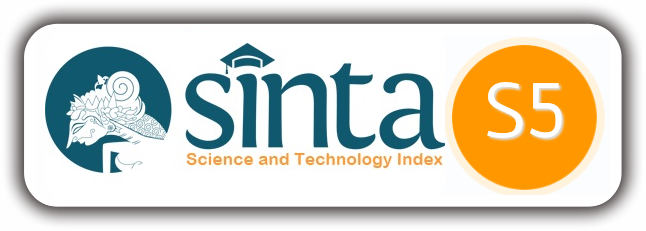MEMAHAMI PELUANG TRANSFORMASI RUMAH SAKIT PETROKIMIA GRESIK DARI KELAS C KE KELAS B (Pendekatan Penelitian Kewirausahaan)
Verra Rizki Amelia(1*), Sumiyana Sumiyana(2)
(1) Universitas Gadjah Mada, Yogyakarta
(2) Departemen Akuntansi, Fakultas Ekonomika dan Bisnis, Universitas Gadjah Mada, Yogyakarta
(*) Corresponding Author
Abstract
Abstract
This study aims to identify business transformation opportunities of Petrokimia Gresik hospital from C-class to B-class. In this era of JKN, the establishment of hospital classes correlates with the amount of ceiling reimbursement and referrals. The lower the hospital class, the smaller the amount of ceiling, and the number of services recognized by the BPJS is limited to the status of the hospital class. The emergence of the BPJS program makes the determination of hospital class status to be important. Researchers use the entrepreneurial research approach, therefore, the three theories that form the basis of this research are theory of identification and development of opportunities; institutional theory; and the theory of achievement needs. This research is a qualitative research.
The author conducts an analysis based on the results of interviews, observation, and documentation analysis. The results of the study show that the opportunity of Petrokimia Gresik hospital has not yet reached business transformation. According to the Getzel matrix, in the theory of identification and development of opportunities, Petrokimia Gresik hospital has the capability of values creation, but has not found the values sought to transform. One of the causes is that doesn’t have the motivation. In addition, the reasons that can be summarized from the results of the study regarding the lack of motivation are regulatory factors and the influence of the government; the distance between hospitals; the absence of rational legal order for transformation; financial readiness; unpreparedness of the hospitals, both administratively and financially; and the influence of parent companies.
Keywords
Full Text:
PDFReferences
Referensi Ardichvili, A., Cardozo, R., & Ray, S. 2003. A Theory of Entrepreneurial Opportunity Identification and Development. Journal of Business Venturing, 18, 105-123. Audretsch, David B., dan Max Keilbach. 2007. The Theory of Knowledge Spillover Entrepreneurship. Journal of Management Studies 44 (7), 1242-1254. Baron, R. A. 2006. Opportunity Recognation as Pattern Recognition: How Entreprenuers Connect the Dots. Academy of Management Perspective, 104-119. Bommel, Koen van. 2014. Towards a Legitimate Compromise?: An exploration of Integrated Reporting in the Netherlands. Accounting, Auditing & Accountability Journal 27 (7), pp.1157-1189 Carlsson, B., Braunerhjelm, P., McKelvey, M., Olofsson, C., Persson, L., & Ylinenpää, H. 2013. The Evolving Domain of Entrepreneurship Research. Small Business Economics 41 (4), 913-930. Carolis, Donna Marie De, and Patrick Saparito. 2006. Social capital, Cognition, and Entrepreneurial Opportunities: A Theoretical Framework, Entrepreneurship Theory and Practice 30, 41-56. Cliff, J. E., Jennings, P. D., dan Greenwood, R. 2006. New to the Game and Questioning the Rules: The Experiences and Beliefs of Founders Who Start Imitative Versus Innovative Firms. Journal of Business Venturing, 21(5), 633-663. Collins, C.J., Hanges, P.J., & Locke, E.A., 2004. The Relationship of Achievement Motivation to Entrepreneurial Behavior: A Meta-Analysis. Human Performance 17, 95–117. George, N. M., Parida, V., Lahti, T., & Wincent, J. 2016. A Systematic Literature Review of Entrepreneurial Opportunity Recognition: Insights on Influencing Factors . International Entrepreneurship Management 12, 309-350. Harian Rakyat Merdeka. 2017. “Dadan S Suharmawijaya: RS Swasta Terpaksa Bohongi Pasien BPJS, Karena Kendala Proses Klaim”. Kantor Berita Politik RMOL, 4 Desember. Diakses pada 17 Agustus 2018. https://www.rmol.co/read/2017/12/04/316869/Dadan-S-Suharmawijaya:-RS-Swasta-Terpaksa-Bohongi-Pasien-BPJS,-Karena-Kendala-Proses-Klaim- McClelland, D.C. 1961. The Achieving Society. Princeton, New Jersey: Van Nostrand. Mustakini, Jogiyanto Hartono. 2006. Sistem Informasi Stratejik untuk Keunggulan Kompetitif Memenangkan Persaingan dengan Sistem Teknologi Informasi. Yogyakarta: Penerbit Andi. Nonaka, Ikujiro. 1994. “A Dynamic Theory of Organizational Knowledge Creation.” Organization Science 5 (1):14–37. Pech, R. J., & Cameron, A. 2006. An Entrepreneurial Decision Process Model Describing Opportunity Recognition. European Journal of Innovation Management, 9(1), 61-78. Rauch, A., & Frese, M. 2007. Let's Put the Person Back into Entrepreneurship Research: A Meta-Analysis on The Relationship Between Business Owners' Personality Traits, Business Creation, and Success. European Journal of work and organizational psychology 16(4), 353-385. Scott, W. R. 1995. Introduction: Institutional Theory and Organizations. The institutional construction of organizations, 11-23. Shane, S., & Venkataraman, S. 2000. The Promise of Entrepreneurship as a Field of Research. Academy of Management Review, 25(1), 217–226. Thompson, A., Peteraf, M., Gamble, J., & Strickland, A. 2012. Crafting and Executing Strategy: The Quest for Competitive Advantage, Concepts and Cases, Twentieth Edition. New York: McGraw-Hill Unger, Jens M., Andreas Rauch, Sophie E. Weis, dan Michael Frase. 2015. Biology (prenatal testosterone), Psychology (Achievement Need) and Entrepreneurial Impact. Journal of Business Venturing Insights 4, 1-5. Wang, Yu-Lin, Andrea D Ellinger, and Yen-Chun Jim Wu. 2013. Entrepreneurial Opportunity Recognition: An Empirical Study of R&D Personnel. Management Decision 51, 248-266. Yin, Robert K. 2016. Qualitative Research from Start to Finish-Second Edition. New York: The Guilford Press.
Article Metrics
Refbacks
- There are currently no refbacks.
This work is licensed under a Creative Commons Attribution 4.0 International License.
______________________________________________________________________________________________________
2302 - 1500


_logo2.png)





